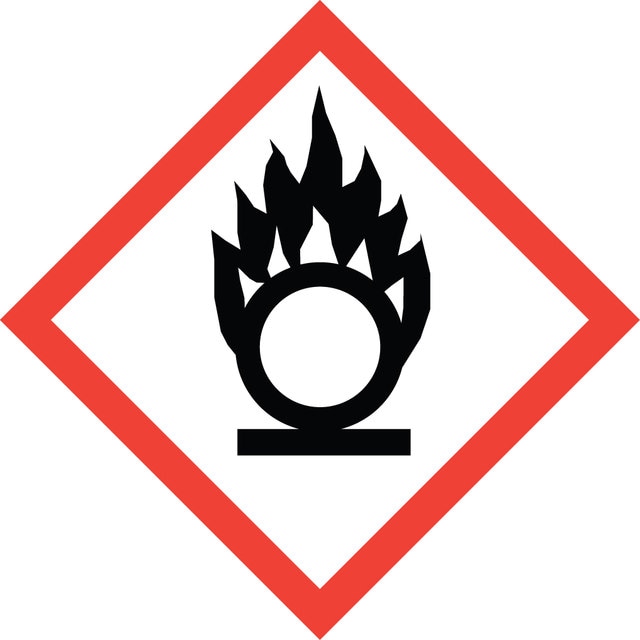Select a Size
About This Item
solid
Product Name
Silver nitrate, 99.9999% trace metals basis
InChI key
SQGYOTSLMSWVJD-UHFFFAOYSA-N
InChI
1S/Ag.NO3/c;2-1(3)4/q+1;-1
SMILES string
[O-][N+]([O-])=O.[Ag+]
vapor density
5.8 (vs air)
assay
99.9999% trace metals basis
form
crystalline
solid
reaction suitability
core: silver
impurities
≤1.5 ppm Trace Metal Analysis
mp
212 °C (dec.) (lit.)
application(s)
PEM fuel cells
homogeneous catalyst
material synthesis precursor
Quality Level
Looking for similar products? Visit Product Comparison Guide
Application
- An activator in Ni-P coating of fly-ash cenosphere particles by the electroless method.
- A silver precursor to prepare Ag–TiO2 nanomaterials applicable in the photocatalytic degradation of rhodamine 6G dye molecule.
- Hydrolytic oxidation of organosilanes to generate hydrogen.
- Oxidation of a variety of aldehydes to corresponding carboxylic acids in the presence of H2O2 as an oxidizer.
General description
signalword
Danger
Hazard Classifications
Aquatic Acute 1 - Aquatic Chronic 1 - Eye Dam. 1 - Met. Corr. 1 - Ox. Sol. 2 - Repr. 1B - Skin Corr. 1A
Storage Class
5.1B - Oxidizing hazardous materials
wgk
WGK 3
flash_point_f
Not applicable
flash_point_c
Not applicable
ppe
Eyeshields, Faceshields, Gloves, type P3 (EN 143) respirator cartridges
Regulatory Information
Choose from one of the most recent versions:
Already Own This Product?
Find documentation for the products that you have recently purchased in the Document Library.
Articles
Oxidation and reduction reactions are some of the most common transformations encountered in organic synthesis
Silver nanomaterials have unique physical, chemical, and optical properties that are currently being leveraged for a wide variety of biological applications.
The diversity of applications and nanostructured materials accessible using ultrasonic spray methods are highlighted in this article.
Noble-metal nanostructures find diverse applications from catalysis to biomedical research, leveraging surface properties in various fields.
Related Content
This application note discusses the synthesis of silver nanowires.
Our team of scientists has experience in all areas of research including Life Science, Material Science, Chemical Synthesis, Chromatography, Analytical and many others.
Contact Technical Service


